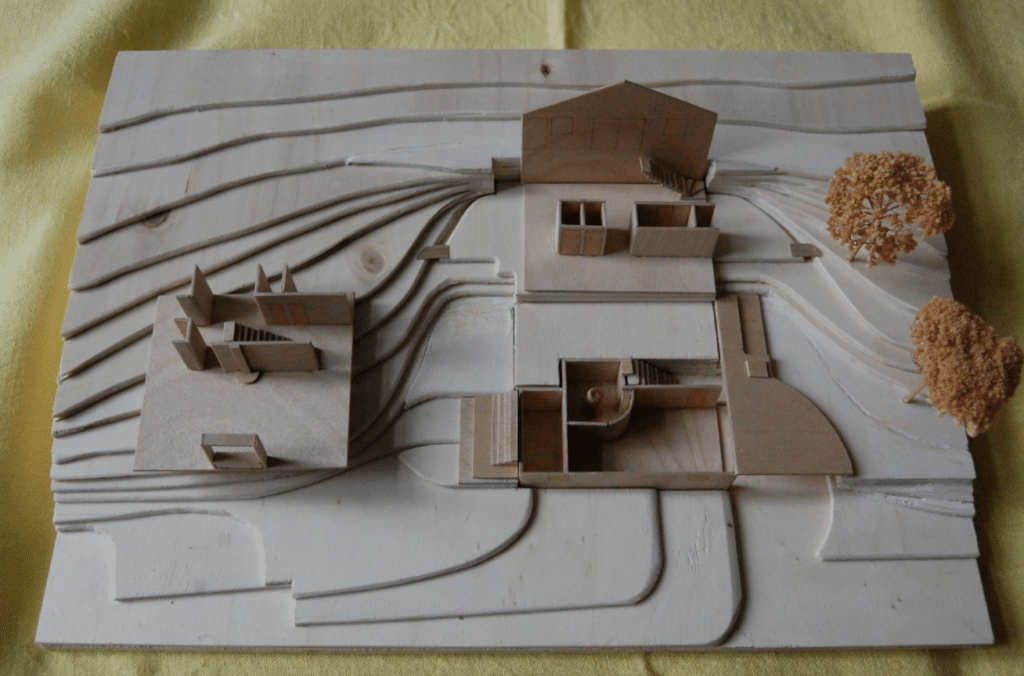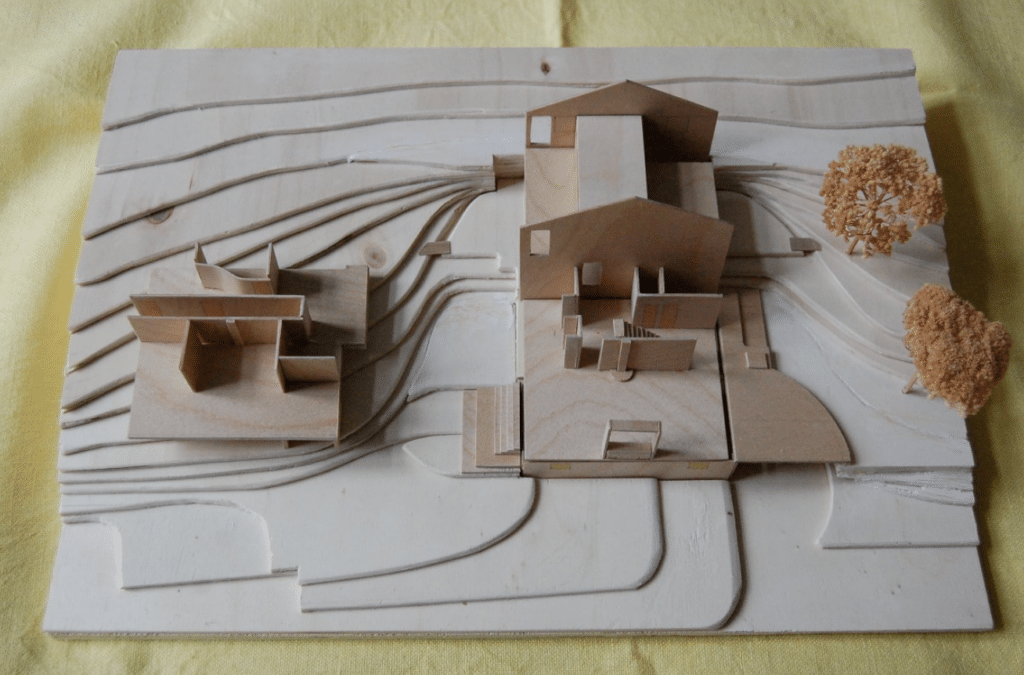Annette Homann
Arche-Homann Architect
info@arche-homann.de
Introduction / New Patterns of Communion
Addressing the claim “No one is an island” and the question “How do places heal us spiritually?” my contribution will follow an ancient tradition, the identification between the human body and the built body, a metaphorical or even metonymic transposition. My path will oscillate between core and conjunction, between stable concepts of the body, ideals of strength, balance, also associated with sacred built bodies, and the margins of such ideals, thresholds and gaps. The pandemic, illnesses and shortcomings, questioned the meaning of ideals of nearly all kinds.
The approach connects two schools of thought, phenomenology and semiotics: the subjective base of bodily experience and the collectively structured symbolic systems. Inspired by the humanistic tradition I focus on the word “religio” in the sense of Vico1 as a poetic challenge and on the corporeal imagination as an important counterweight, to the processing of cognitive data and to the alienation through a predominantly trivial and isotopic cartesian built environment. In serendipitous moments the architectural imagination seemingly magically organizes the sensuous manyfold and bridges a gap that other living beings do not know – as far as we know.
Juhani Pallasmaa called the modern imagery with its devotion to weightlessness, abstraction and timeless perfection one of journey and departure. And he called the primordial imagery of interiority, intimacy and comfort one of homecoming and female2. Surely the human being is manifold and layered time, layered spaces offer emotional chances for the human animal symbolicus3 as we dwell in culture, memory and dreams.
Theory benefits from demonstrations as the soul benefits from images to understand. I will share the design for a small Medical Herb Manufacture (Kräuterhof) that I developed as an architect in the post-pandemic summer of 2022 for a client in Switzerland.
Design Theory
The process of demythization, which began during the enlightenment, robbed architecture of a “breathing space” for the human “animal symbolicus” as Hans Blumenberg4 put it. In our present condition we have air conditioning, but we lost the breathing space, that the invisible body relies on. Human beings sense the intangible through tangible artefacts, and the role of the artist or architect is to make the invisible visible. If architects lose the relation to the invisible, if their education covers it mainly by uncovering, promoting revealing far more than skilful veiling, they can no longer devise such signs and spaces, but they clone.
Probably the future of architecture is far more complex than predicting that a mechanical body image will tend to project mechanical built bodies, but it should not hurt to know oneself and therefore I believe it is a good approach for teaching. A “renovated”5 body image might help if we search a sustainable cosmology. The Renaissance ideal body in circles or Le Corbusier’s Modulor body are wonderful “Selfies” from the past to inform this search. A surrealistic approach would acknowledge the minds sometimes obscure and sometimes revealing theatre of memory which is part of our invisible body. Images of “Fusion” surely attract students, defining our body as infinitely “entangled” as Tim Ingold indicates.6 But may be “Schizo” could gain the largest popularity, because as Thomas Berry put it “we have the most vast paradox of all, human persons as free, intelligent numinous beings while negating these very interior qualities by their own objective reasoning mind and subserving there own rationalization”7.
The translation of a vital numinous poetic a-priori into wood or stone, into a door and threshold or into Notre Dame, is achieved through technology. This is a word with two worlds, the Logos of Techne (the construction) and the Techne of Logos (the construing).8 Details make the text belonging to our narrational scope and the care for details is a first measure for a non-trivial act. Structural joints in the cathedrals represented animals, acrobats and double beings that articulated connections between body parts and to the mundane. They completed the sacred text with the marginal. We think architecture with our bodies, and we think our body through architecture, as Marco Frascari, former director of the Azrieli School of Architecture in Ottawa, put it. The reciprocity is as compelling as dramatic and indeed beyond the metaphorical.
The orifices of the body had particular significance as margins to the world. Consequently, the openings of buildings received particular attention and endless playful construing.
Today these margins might be interpreted non-figural to playfully animate the corporeal intelligence. In the end it is essential that we can find our challenges, dreams and our full human – and entangled – identity.
Vital presence, flow and the loop between the body and the world can be choreographed by small surprises and suggestions to the body. But the polarity between an inherited, sacred or transcending repertoire of forms, patterns and measures and their necessary vital counterparts very often seems off track or maybe I should say too narrowly bound in track. The 1963 interventions of Carlo Scarpa in the Fondazione Querini Stampalia inviting the Venetian Aqua Alta into parts of the Palazzo to me seems quite impossible under today heritage regulations.
Cherishing the holy river of traditions is wonderful but if such river has no bed with wild and hidden creeks it is a canal. A difficult place for communion.
Horkheimer and Adorno stated that a fully enlightened earth will shine only as a sign for triumphal misery.9 The famous quote from the Dialectic of Enlightenment may be is unnecessary in this audience, distinguishing the poetic a priori of space. But the rationality of clients or authorities can be challenging, and I found it interesting that congregations often argue for known signifiers, frontal entrances and an increasing amount of light. Somehow the credo of the frugal protestant lecture hall is still alive as a self-image, as a promise of being modern, to be potentially beautifully naked.
Mies built bodies are a good example that nakedness does not equal nakedness.
Why should the door to a spiritual space be transparent? As if children would not open doors? It depends on the project and the glass door as just stressed could be trivial or very skillful. But generally, reflecting about “core and conjunction”, I argue that the “gap” that the human condition has arisen can not be erased or barbarism knocks at the door if barbarism knocks at all.
Alberto Pérez-Gómez put it right in the ACSF Critical Conversation 2021 when he – following Heideggerian terminology – assumed places to be concealed in our today world. Places would hide because the world out there is so deeply dualistic and cartesian. Where the gap is not felt anymore indeed there is reason to hide for any-”thing” that senses a gap and a poetic challenge.
Design Practise
The design for the Swiss client demonstrates some of my issues. I show plans and a wooden model. (…)
Inspired by Scarpa’s welcoming gestures to the water in Venice the curved retaining wall, should allow the water of the mountain to drip through and wet the wall. Vertical thin pillars, concrete, stone, water. There is a second curved wall inside to the heating room, dry and warm. (…)
The drawings of the historical building soon revealed proportions close to the square and the Golden Section. Thanks to the conservative Swiss building laws on this site no discussion was necessary about the ancient cosmic believe that architecture should attune with harmonies.
Square and Golden Section reappear in plan, section, elevation as a matrix of the built body. (…) The veranda to the south recalls a building tradition that the client and myself visited.
Connecting the project to the design philosophy, the concept can be traced as follows:
A balance between a harmonic stable core that is completed or recharged by further elements that perform like ancient spoils in monuments: Homecoming and unknown journey. (…)
I believe the topic “New ways of Communion” is manifold.
The client has good social skills, and I am confident she will run an inviting open house. Sharing knowledge about medical herbs and keeping this cultural heritage alive is at the heart of her intentions.
Getting back to my initial question about a “renovated” body image I like to argue it has to be a body – built upon love – body image. However you want to read this – I believe – grammatically incorrect sentence: the earth, a comfortable fireplace, water in between rocks, animated air and hopefully animals in between the herbs are part of this body.

Figure1: Remains of the burned down house, 2022 (photo by author)

Figure 2: Wooden model showing semi basement with garage and (covered) curved retaining wall (see text). On upper terrace: ground floor of Medical Herb Farm, To the left: ground floor of dwelling (photo by author)

Figure 3: Wooden model with ground floor, living, dining, kitchen to the East (front) and steps into garden. On upper terrace: first floor of Medical Herb Farm, To the left: first floor of dwelling (photo by author
1 Ernesto Grassi, Die Macht der Phantasie(Frankfurt a. Main: Verlag A. Hain, Athenäum T., 1992) p.250
2 Juhani Pallasmaa, Matter, Hapticity and Time Material Imag.(Building Material, No.20, 2016) p.179
3 Ernst Cassirer, Versuch über den Menschen (Hamburg: Felix Meiner Verlag, 2007) p.51
4 Hans Blumenberg in Work on Myth (Cambridge: MIT Press 1985) quoted by Marco Frascari in Monstersof Architecture (Washington DC: Rowman and Littlefield, 1991) p.9
5 Alberto Pérez-Gómez, The Renovation of the Body (AA files, No.13, 1986) p.26-29
6 Tim Ingold, The Wedge and the Knot: Hammering and Stitching the Face of Nature, in: Nature, Space and the Sacred, Eds. Sigurd Bergmann, P.M. Scott, H. Bedford-Storm (Farnham: Ashgate, 2009)
7 Thomas Berry, The New Story, In Teilhard in the 21st Century: The emerging Spirit of Earth, Eds. Arthur Fabel and Donald St. John (Maryknoll, NY: Orbis Books, 2003, p.86
8 Marco Frascari, Monsters of Architecture, (Washington DC: Rowman and Littlefield, 1991, p.4
9 Max Horkheimer and Theodor W.Adorno, Dialektik der Aufklärung(Frankfurt a. Main: Fischer Taschenbuch Verlag, 2022) p.9



